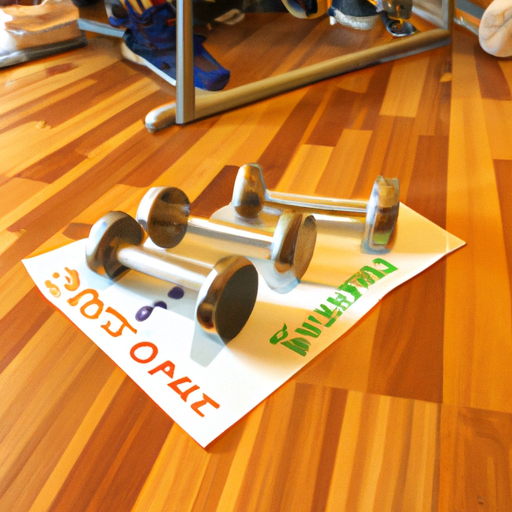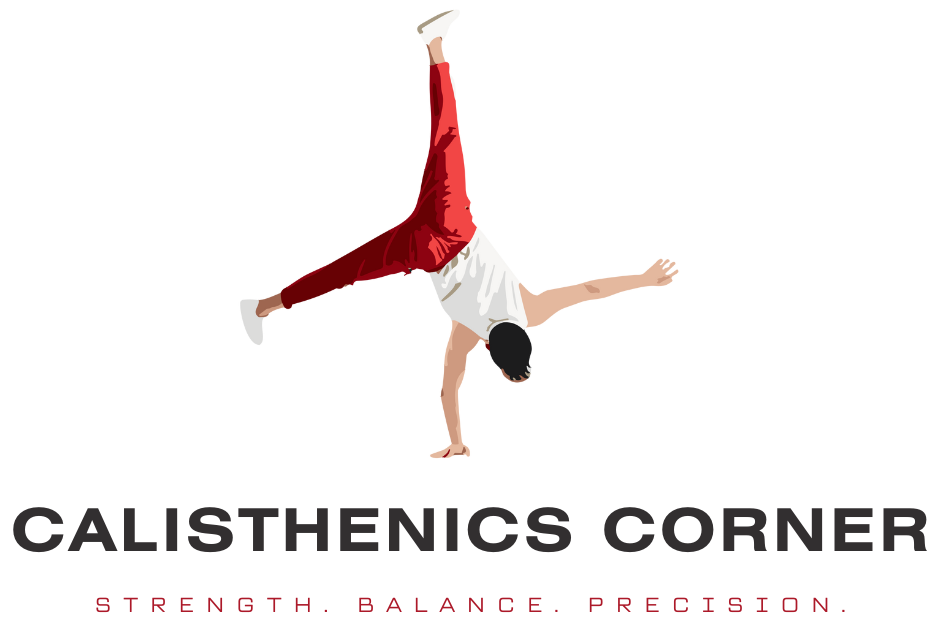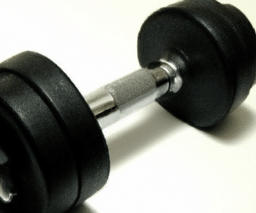In the world of fitness, there are numerous workout options available to help you achieve your desired level of strength and athleticism. Two popular choices among fitness enthusiasts are calisthenics and weight training. Calisthenics, focused on bodyweight exercises, emphasizes strength, flexibility, and balance. On the other hand, weight training utilizes external weights to build muscular strength and mass. But what if you want to combine the two? In this article, we will explore the benefits and best practices of integrating calisthenics and weight training into your fitness routine for a well-rounded and effective workout.
Benefits of Combining Calisthenics and Weight Training
Increased Strength and Muscle Mass
Combining calisthenics and weight training can lead to increased strength and muscle mass. Calisthenics exercises, such as push-ups, pull-ups, and squats, work multiple muscle groups at once and can help develop overall strength. Weight training exercises, on the other hand, allow for more targeted muscle isolation and can help increase muscle size. By incorporating both types of training into your routine, you can benefit from the best of both worlds and achieve maximum strength and muscle gains.
Improved Athletic Performance
Whether you’re an athlete or simply want to enhance your overall physical abilities, combining calisthenics and weight training can improve your athletic performance. Calisthenics exercises focus on bodyweight movements that mimic natural functional movements. This helps improve agility, balance, coordination, and flexibility. Weight training, on the other hand, helps develop power, explosiveness, and speed. By incorporating both types of training, you can enhance your overall athletic performance and excel in your chosen sport or physical activity.
Enhanced Functional Fitness
Functional fitness refers to the ability to perform daily activities and movements efficiently and without injury. Combining calisthenics and weight training can greatly enhance your functional fitness. Calisthenics exercises, such as lunges, planks, and burpees, engage multiple muscle groups and help improve stability and range of motion. Weight training exercises, such as deadlifts, squats, and overhead presses, help build strength and muscular endurance, further improving your functional fitness. By combining these two training methods, you can develop a well-rounded fitness level that translates into improved performance in everyday life.
Increased Metabolism and Fat Loss
Combining calisthenics and weight training can also help increase your metabolism and promote fat loss. Calisthenics exercises are typically performed at a higher intensity and require more energy expenditure than traditional weight training exercises. This can lead to an increase in overall calorie burn and a higher metabolic rate. Additionally, weight training helps build lean muscle mass, which increases your basal metabolic rate, leading to increased calorie expenditure even at rest. By incorporating both types of training into your routine, you can maximize your fat loss potential and achieve a leaner and more toned physique.
Understanding Calisthenics and Weight Training
What is Calisthenics?
Calisthenics is a form of exercise that utilizes bodyweight movements and exercises to build strength, endurance, and flexibility. It involves using your own body as resistance to perform various movements such as push-ups, pull-ups, lunges, squats, and planks. Calisthenics does not require any equipment and can be done anywhere, making it a convenient and accessible form of exercise. It focuses on functional movements that mimic everyday activities and helps improve overall body control, stability, and mobility.
What is Weight Training?
Weight training, also known as resistance training or strength training, involves using external weights or resistance to build strength and muscle mass. This can be done using dumbbells, barbells, resistance bands, or weight machines. Weight training exercises typically target specific muscle groups and allow for more targeted muscle isolation and development. It helps increase muscle size, strength, and power.
Differences and Similarities
While calisthenics and weight training are different forms of exercise, they also have similarities. Both forms of training aim to improve strength and overall fitness levels. Calisthenics primarily uses bodyweight as resistance, while weight training involves external weights or resistance. Calisthenics focuses on functional movements and full-body engagement, while weight training allows for more targeted muscle isolation. Combining both forms of exercise can provide a well-rounded training routine that balances strength, endurance, and functional fitness.
Creating a Balanced Workout Routine
Setting Clear Goals
Before combining calisthenics and weight training, it’s important to set clear goals. Determine what you want to achieve from your workouts, whether it’s increasing strength, building muscle mass, improving athletic performance, or losing fat. Defining your goals will help structure your training program and guide your exercise selection and progression.
Determining Fitness Level
Understanding your current fitness level is crucial when creating a balanced workout routine. Assess your strength, endurance, and mobility to gauge where you currently stand. This will help determine the appropriate starting point for your calisthenics and weight training exercises and ensure you progress at a safe and effective pace.
Balancing Strength and Endurance
To create a balanced workout routine, it’s important to balance strength and endurance training. Calisthenics exercises often focus on endurance and bodyweight movements, while weight training emphasizes strength and muscle development. Incorporating both types of exercises will help you build both strength and endurance, leading to overall improved fitness.
Scheduling Training Days
To ensure you have a balanced workout routine, it’s important to schedule your training days effectively. Aim for a mix of calisthenics and weight training sessions throughout the week. This could involve alternating between the two on different days or integrating them within the same workout. Finding a schedule that works for you and allows for proper rest and recovery is essential.
Choosing the Right Exercises
Compound Exercises
Compound exercises are multi-joint movements that engage multiple muscle groups at once. These exercises are highly effective for building overall strength and muscle mass. Some examples of compound exercises include squats, deadlifts, bench press, and pull-ups. Incorporating compound exercises into your routine allows you to work multiple muscle groups simultaneously, maximizing your training efficiency.
Isolation Exercises
Isolation exercises, on the other hand, target specific muscle groups and focus on muscle isolation and development. These exercises are particularly useful for targeting smaller or weaker muscle groups. Some examples of isolation exercises include bicep curls, tricep extensions, calf raises, and lateral raises. Incorporating isolation exercises into your routine can help address muscular imbalances and further enhance your overall physique.
Incorporating Compound and Isolation Exercises
To create a well-rounded workout routine, it’s important to incorporate both compound and isolation exercises. The combination of compound exercises to build overall strength and muscle mass, and isolation exercises to target specific muscle groups, ensures balanced muscle development and improved functional fitness. By including a variety of exercises in your training program, you can target all major muscle groups and achieve optimal results.
Integrating Calisthenics and Weight Training
Full Body Workouts
One way to integrate calisthenics and weight training is by incorporating full-body workouts. This type of workout involves performing exercises that engage multiple muscle groups in one session. For example, you can combine compound weight training exercises such as squats, deadlifts, and bench press with calisthenics exercises like push-ups, pull-ups, and lunges. Full-body workouts are ideal for efficiency and time-saving as they target multiple muscle groups in a single training session.
Upper Body and Lower Body Split
Another way to integrate calisthenics and weight training is by splitting your workouts into upper body and lower body sessions. This allows you to target each muscle group more specifically and ensure proper recovery between workouts. For example, you can perform calisthenics exercises such as push-ups, dips, and pull-ups on upper body days, while incorporating weight training exercises like squats, deadlifts, and lunges on lower body days. This split routine helps maintain a balanced training program while allowing for greater intensity and focus on specific muscle groups.
Alternating Days
An alternative approach is to alternate calisthenics and weight training days. This involves dedicating certain days to calisthenics workouts and other days to weight training workouts. For example, you can perform calisthenics exercises on Monday, Wednesday, and Friday, and weight training exercises on Tuesday, Thursday, and Saturday. This approach allows for optimal recovery between workouts and ensures that each training modality receives dedicated attention.
Supersetting Calisthenics with Weight Training
Supersetting involves performing two exercises back-to-back without rest. This method can be used to integrate calisthenics and weight training by pairing a calisthenics exercise with a weight training exercise. For example, you can perform a set of push-ups immediately followed by a set of bench press, or a set of lunges followed by a set of dumbbell squats. Supersetting allows for maximum efficiency and can be a great way to challenge both your muscular and cardiovascular systems.
Progressive Overload and Tracking Progress
Importance of Progressive Overload
Progressive overload is essential for continual progress and improvement. It involves gradually increasing the demands placed on your muscles and body as they adapt to exercise. This can be achieved by increasing weight, repetitions, sets, or intensity over time. Progressive overload ensures that you continue to challenge your muscles and stimulate growth and strength gains.
Increasing Resistance and Difficulty
To implement progressive overload, gradually increase the resistance or difficulty of your exercises. For weight training, this may involve adding more weight to the barbell or dumbbells. For calisthenics, you can progress by adding weighted vests or resistance bands, or by transitioning to more challenging variations of the exercises. Increasing resistance and difficulty ensures that your muscles are continuously challenged and stimulated for growth.
Tracking Performance and Progress
To effectively implement progressive overload, it’s important to track your performance and progress. Keep a training journal or use a fitness tracking app to record the weight, sets, and repetitions performed for each exercise. This will allow you to monitor your progress over time and make informed decisions regarding progression. Regularly reviewing your training logs will help you stay motivated and maintain a structured approach to your workouts.

Avoiding Overtraining and Injuries
Rest and Recovery
Rest and recovery are crucial components of any training program. Overtraining can lead to a decrease in performance, increased risk of injury, and prolonged recovery time. Allow yourself adequate rest days between workouts to give your muscles time to repair and recover. Aim for at least 48 hours of rest between intense workouts. Additionally, ensure you are getting enough quality sleep, as this is when your body goes into repair mode and growth hormone is released.
Proper Warm-Up and Cool-Down
Proper warm-up and cool-down routines are essential for injury prevention and optimal performance. Before starting your workouts, perform a dynamic warm-up to increase blood flow, loosen up your muscles, and prepare your body for exercise. This can include exercises such as jumping jacks, arm circles, and bodyweight lunges. After your workouts, perform a static stretching routine to help relax your muscles and improve flexibility.
Listening to Your Body
It’s important to listen to your body and pay attention to any signs of overtraining or excessive fatigue. Pushing through pain or extreme exhaustion is not recommended as it can lead to injuries. If you notice persistent muscle soreness, decreased performance, or mental fatigue, it may be a sign that you need to take a break or reduce the intensity of your workouts. Always prioritize your body’s needs and make adjustments accordingly.
Injury Prevention Techniques
To minimize the risk of injuries, incorporate injury prevention techniques into your training routine. This can include proper form and technique when performing exercises, using appropriate equipment and gear, and gradually progressing the intensity and difficulty of your workouts. It’s also important to address any muscle imbalances or weaknesses through targeted exercises and stretches. If you’re unsure about proper form or technique, consider working with a qualified trainer or coach.
Nutrition and Hydration
Importance of a Balanced Diet
Proper nutrition is essential for supporting your training and maximizing your results. Ensure you’re following a balanced diet that includes a variety of whole foods, such as lean proteins, fruits, vegetables, whole grains, and healthy fats. These provide the necessary nutrients to fuel your workouts, aid in muscle recovery, and support overall health. Avoid excessive processed foods, sugary snacks, and unhealthy fats, as they can hinder your progress and affect your energy levels.
Adequate Protein Intake
Protein is crucial for muscle repair and growth. Ensure you’re consuming an adequate amount of protein to support your training. Aim for approximately 0.8 to 1 gram of protein per pound of bodyweight per day. Good sources of protein include lean meats, poultry, fish, eggs, dairy products, legumes, and plant-based protein sources such as tofu and tempeh. Consider incorporating protein shakes or bars into your diet if you’re having difficulty meeting your protein needs through whole foods alone.
Hydration for Optimal Performance
Proper hydration is essential for optimal performance and recovery. Dehydration can lead to decreased performance, muscle cramps, and fatigue. Aim to drink water throughout the day and especially before, during, and after your workouts. The amount of water needed varies depending on factors such as body weight, activity level, and climate. Monitor the color of your urine; if it’s pale yellow, you’re likely adequately hydrated.
Sample Workouts
Full Body Calisthenics and Weight Training Circuit
- Warm up with 5 minutes of light cardio (e.g., jogging, jumping jacks).
- Perform 3 sets of 10 push-ups.
- Immediately follow with 3 sets of 10 dumbbell squats.
- Perform 3 sets of 10 inverted rows.
- Immediately follow with 3 sets of 10 dumbbell lunges (each leg).
- Perform 3 sets of 10 tricep dips.
- Immediately follow with 3 sets of 10 dumbbell bench press.
- Cool down with 5 minutes of stretching.
Upper Body and Lower Body Split Routine
Upper Body Day:
- Warm up with 5 minutes of light cardio.
- Perform 3 sets of 8-10 pull-ups.
- Immediately follow with 3 sets of 10 dumbbell shoulder press.
- Perform 3 sets of 10 chest dips.
- Immediately follow with 3 sets of 10 dumbbell bicep curls.
- Perform 3 sets of 10 tricep pushdowns.
- Cool down with 5 minutes of stretching.
Lower Body Day:
- Warm up with 5 minutes of light cardio.
- Perform 3 sets of 10 barbell back squats.
- Immediately follow with 3 sets of 10 dumbbell Romanian deadlifts.
- Perform 3 sets of 10 walking lunges (each leg).
- Immediately follow with 3 sets of 10 calf raises.
- Perform 3 sets of 10 barbell hip thrusts.
- Cool down with 5 minutes of stretching.
Advanced Calisthenics Superset with Weight Training
- Warm up with 5 minutes of light cardio.
- Perform 4 sets of 8-10 muscle-ups (or assisted muscle-ups).
- Immediately follow with 4 sets of 8-10 weighted pistol squats (each leg).
- Perform 4 sets of 8-10 handstand push-ups (or assisted handstand push-ups).
- Immediately follow with 4 sets of 8-10 weighted pull-ups.
- Perform 4 sets of 8-10 front lever raises.
- Immediately follow with 4 sets of 8-10 Bulgarian split squats (each leg).
- Cool down with 5 minutes of stretching.
Benefits of Cross Training
Preventing Plateaus
One of the key benefits of combining calisthenics and weight training is that it helps prevent training plateaus. When you continuously perform the same exercises and routines, your body adapts and becomes more efficient, resulting in decreased progress. By incorporating different types of exercises and training methods, you constantly challenge your muscles in new and different ways, preventing plateaus and stimulating further growth and development.
Breaking Monotony
Combining calisthenics and weight training can help break the monotony of your workouts. Doing the same exercises day in and day out can become boring and demotivating. By incorporating a variety of exercises, you keep your workouts fresh, exciting, and engaging. This not only makes your workouts more enjoyable but also helps maintain your long-term commitment to a consistent exercise routine.
Improved Overall Fitness
Cross-training with calisthenics and weight training can lead to improved overall fitness. The combination of both strength and endurance-focused exercises helps develop a well-rounded fitness level. Calisthenics improves cardiovascular endurance, flexibility, and functional movements, while weight training enhances strength, power, and muscle growth. Together, they contribute to improved overall fitness, allowing you to perform better in various physical activities and daily life.
In conclusion, combining calisthenics and weight training offers numerous benefits. It allows for increased strength and muscle mass, improved athletic performance, enhanced functional fitness, and increased metabolism and fat loss. Understanding the fundamentals of calisthenics and weight training and creating a balanced workout routine that incorporates both types of training is key. By choosing the right exercises, implementing progressive overload, avoiding overtraining and injuries, and paying attention to nutrition and hydration, you can maximize the benefits of combining these two effective training methods. So why choose between calisthenics and weight training when you can enjoy the benefits of both? Start combining them today and unlock your full fitness potential.








